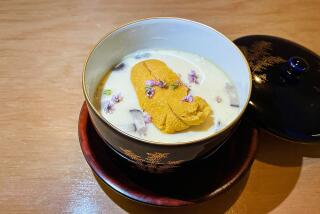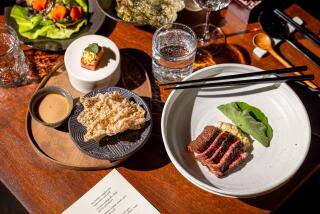Newsletter: Has the curse on a storied Melrose restaurant space finally lifted?
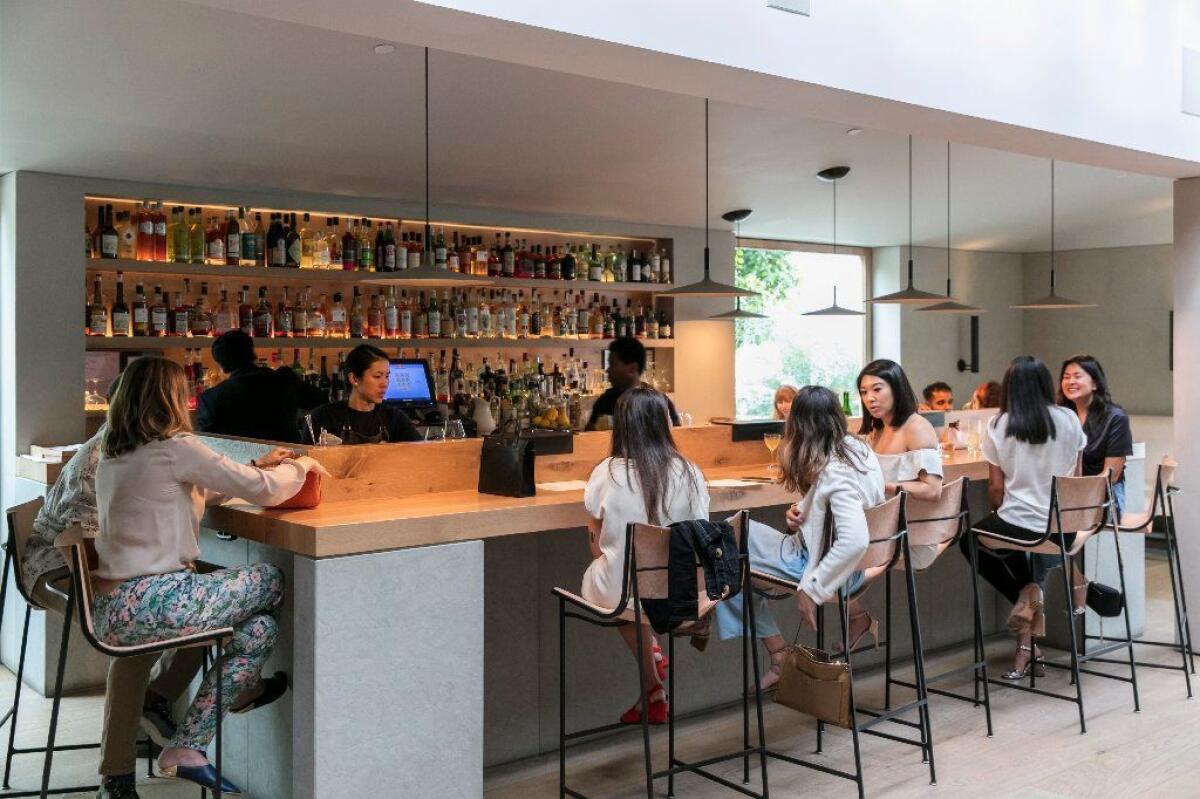
This week I reviewed Auburn, a 4-month-old restaurant on Melrose Avenue where chef-owner Eric Bost creates a mix-and-match tasting menu: Diners choose four, six or nine courses from a list of 12 ever-changing dishes. “Fine dining” is such a squishy term these days, its definitions blurry in this age of culinary individualism. But however you might describe the place, Auburn warrants a splurge; Bost’s cooking stirs the emotions as grippingly as the intellect. And for tasting menu haters, the bar area serves an à la carte menu and reaches nearly the same heights.
The restaurant feels of-the-moment Los Angeles in its naturalist beauty (plants breathe life into the minimalist space) and its wide-open creativity, though much of Bost’s culinary background is steeped in grand French traditions. He cooked at Alain Ducasse au Plaza Athénée and Les Ambassadeurs at the Hôtel de Crillon, both in Paris; he met Elodie Bost, his wife and business partner, during his stint in Europe. Later he ran kitchens for Guy Savoy in Las Vegas and Singapore.
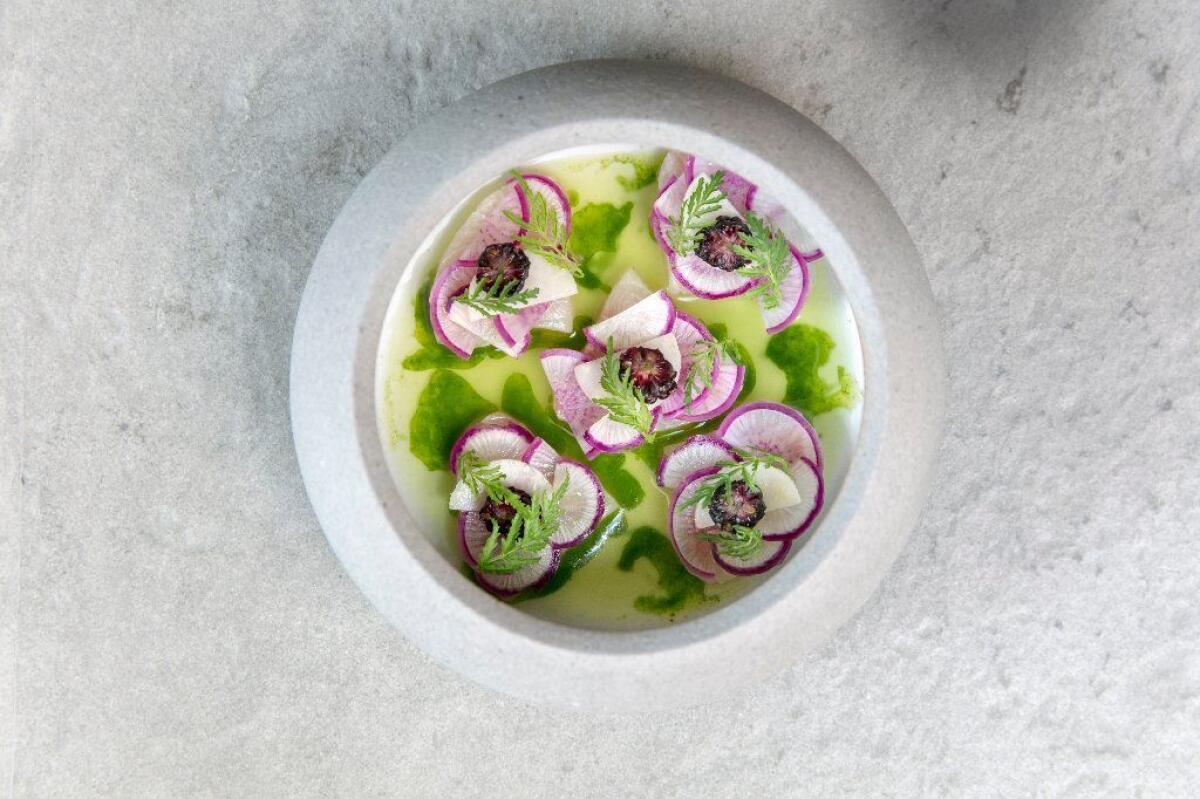
The French-Californian interplay stuck in my mind before writing the review — and then I began reading up on the background of the restaurant’s space. I had no idea how much Los Angeles dining history had played out at Auburn’s address.
Michel Richard opened his first restaurant, Citrus, in the building in 1987; it was a huge deal in its day. Richard, who was born in Brittany and trained as a pastry chef, had come to Los Angeles in the 1970s and opened a pastry shop. When he slid over to the savory side of the kitchen, he made then-daring dishes such as lamb with fava beans over goat cheese-filled saffron ravioli, fried shrimp wrapped in shredded phyllo, and duck breast in onion sauce crowned with fried onions and caramelized onions.
Patric Kuh, for many years the restaurant critic at Los Angeles magazine, cooked at Citrus in its heyday. He noted in a 2008 article that Richard “was the perfect person to take California cuisine to its next phase. … He’d grown up poor in the Ardennes and had no interest in giving a sun-kissed gloss to the food of his native country.” Ruth Reichl was The Times’ critic when Richard came on the scene. She concluded her review with a mighty pronouncement: “Citrus has captured the mood of Los Angeles right now, and it has thereby captured the city’s imagination.”
Richard went on to partner in many restaurants around the country; he died in Washington, D.C., in 2016. Citrus closed in 2001; the location took on a cursed reputation as it cycled through several ventures afterward.
“Is there an L.A. address more capable of inspiring fear in the hearts of chefs than 6703 Melrose Ave.? If restaurants are about dreams, the corner of Melrose and Citrus is where they go to die,” Kuh wrote in a 2010 review of Hatfield’s. Quinn and Karen Hatfield had moved their tiny, ambitious restaurant to this larger location that year.
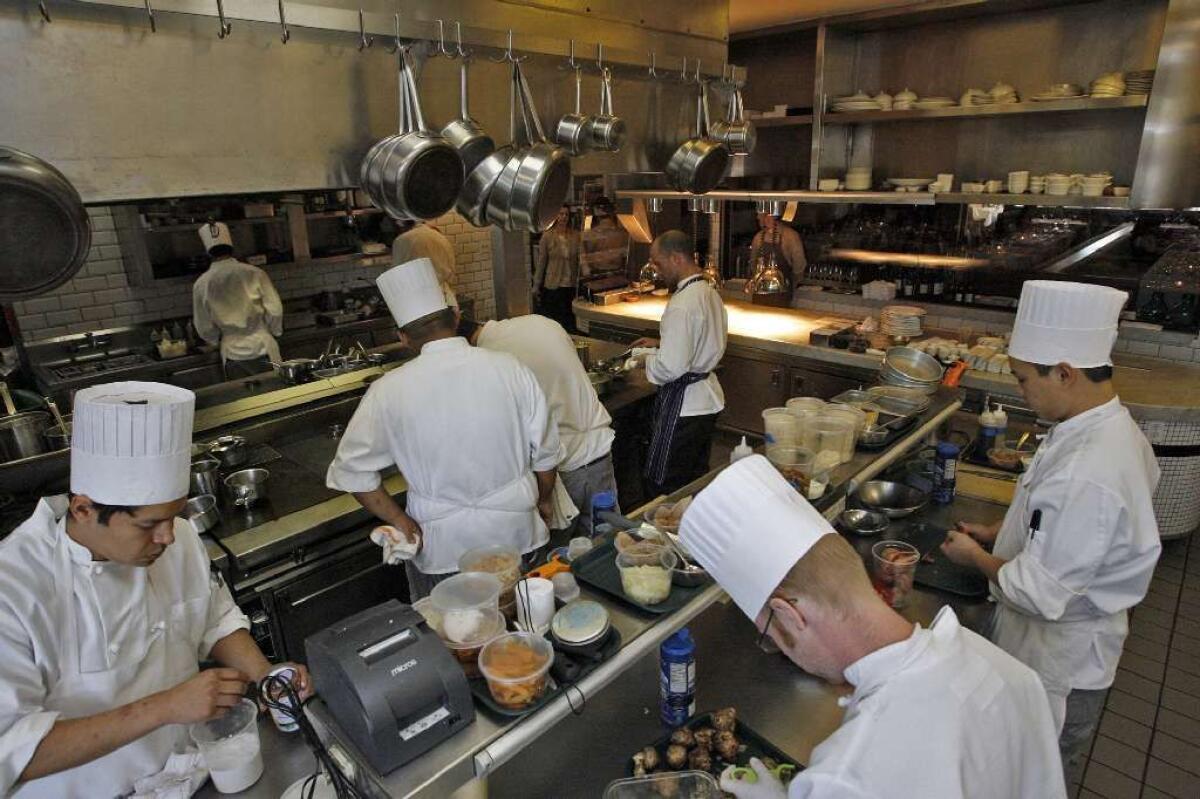
The food at Hatfield’s was solidly modern American — which is to say, anchored in no one cuisine — but French notions were present: croque-madame with prosciutto and yellowtail sashimi, foie gras with pain d’épice, black cod en croute with oven-dried tomato and eggplant purée. Even during an era when French cuisine was seen as archaic in American restaurant culture, its influences never disappeared, especially in the upscale realms. The restaurant closed in 2014, though the Hatfields continue to operate Odys + Penelope and Sycamore Kitchen.
It was a leap, then, for the Bosts to take on this fraught space with its big-name turnovers. A partnership with the Sprout Group helped fund Auburn’s stunning makeover; seriously, if nothing else swing by and have a cocktail to gape at the sleek rooms with their calming earth tones.
I see French influences in Bost’s cooking mostly in the plating of his food: He can’t break the haute-temple habits of oysters poised over a rocky terrain, or crudo in a swirl of bright, light sauces and tweezered mulberries, or Époisses oozing picturesquely over sunchokes. Nothing about the combination of ingredients or the ways the grill plays into the food tastes fussy, though; it hums with Southern Californian warmth.
Given the success of the Mozzaplex and Ludo Lefebvre’s Trois Mec and Petit Trois a block away, this can’t possibly be a jinxed corner any longer. In any case, for a special-occasion setting in Los Angeles, Auburn feels way more like a blessing than a curse.
ASK THE CRITICS
How much time do you spend doing research before writing on a new restaurant?
— Martha Izquierdo (via Instagram)
It depends on the restaurant! Auburn is an example of a splashy arrival whose opening was thoroughly covered in the media; it was pretty much a given that the paper would review it. Other times I’ll go looking for a place by a cuisine that interests me (and hopefully readers) or in a neighborhood I’d like to spotlight.
Occasionally I go to restaurants I choose not to review: They’re usually on-trend generalist kind of places where the menu — familiar salads; entrees that check the pasta, roast chicken, sea bass and burger boxes — is ubiquitous, the cooking is meh and there’s no story there to mine. Why waste precious space on a middling restaurant when Los Angeles is so rife with compelling and wildly diverse places to eat? (Fellow critic John Kessler once put it to me this way: “Mediocre restaurant, mediocre review.”)
When I do critique a restaurant, I go at least three times to pull together a fair assessment of the food, the atmosphere, the service and the overall ambitions of the place. I don’t spend too much time on the background of the chef or restaurant until the writing process; I want the experiences to predominantly inform my opinions before I begin filling in the contextual details.
Have a question for our critics? Ask it here.

TOP STORIES
- My co-critic Patricia Escárcega is on parental leave (look for reviews from guest critics soon!); before starting her time away she named five restaurants she has reviewed that are driving L.A.’s culinary conversation forward.
- Behold: Lucas Kwan Peterson’s official spicy snack power rankings.
- I’m a fan of Nicole Rucker’s Key lime pie at her bakery-restaurant, Fiona; Genevieve Ko has the recipe (including a smart bar variation).
- Yakult, ramen or Asian pears: What does your H Mart purchase say about you?
- And, in the spirit of favorite summer foods, Amy Scattergood tallies the millions of hot dogs sold at Pink’s.
From the Editors
After a long and distinguished run, Counter Intelligence, our weekly newsletter that rounded up the best of our Food section, has entered a new chapter. It’s now called Tasting Notes and features Times restaurant critics Bill Addison and Patricia Escárcega. Read more here.
More to Read
Eat your way across L.A.
Get our weekly Tasting Notes newsletter for reviews, news and more.
You may occasionally receive promotional content from the Los Angeles Times.
